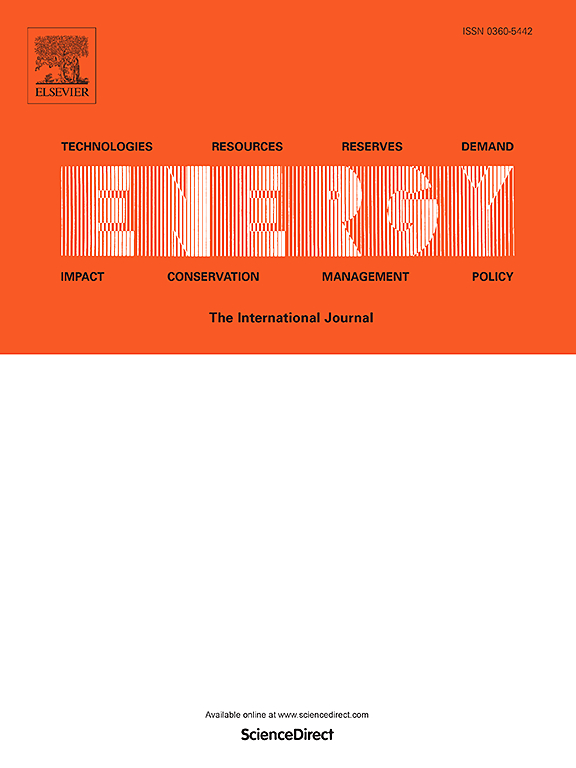Towards the integration of new-type power systems: Hydraulic stability analysis of pumped storage units in the S-characteristic region based on experimental and CFD studies
IF 9
1区 工程技术
Q1 ENERGY & FUELS
引用次数: 0
Abstract
As new-type power systems increasingly require pumped storage units to transition frequently between operational states, maintaining hydraulic stability in the S-characteristic region poses a significant challenge during these switching conditions. This study utilizes model testing and computational fluid dynamics (CFD) to investigate the energy loss characteristics and hydraulic instability of pump-turbines operating within the S-characteristic region. The findings demonstrate that energy losses primarily occur in the guide vane passages and the vaneless space. Specifically, energy loss in the flow passage between guide vanes primarily arises from the rigid rotation of water within that region, with these rotating vortices inducing high-amplitude, low-frequency pressure pulsations inside the unit. An analysis based on the time-averaged enstrophy transport equation using the Rortex method indicates that shear effects and the pseudo-Lamb term, induced by velocity gradients, are the primary factors influencing vortex evolution. Additionally, time-averaged RANS equations combined with particle image velocimetry (PIV) experiments reveal that areas near the boundary between positive and negative velocity gradients exhibit significant rigid vorticity, while shear effects reach their maximum strength in regions away from the vortex core along the trajectory of vortex motion.
迈向新型电力系统的整合:基于实验和CFD研究的s特征区抽水蓄能机组水力稳定性分析
随着新型电力系统越来越多地要求抽水蓄能机组在运行状态之间频繁转换,在这些切换条件下保持s特征区的水力稳定性提出了重大挑战。本研究利用模型试验和计算流体动力学(CFD)研究了s -特征区域内运行的水泵水轮机的能量损失特性和水力失稳。结果表明,能量损失主要发生在导叶通道和无叶空间。具体来说,导叶之间流道中的能量损失主要来自该区域内水的刚性旋转,这些旋转涡流在机组内诱发了高振幅、低频的压力脉动。基于时间平均熵输运方程的分析表明,由速度梯度引起的剪切效应和伪lamb项是影响涡旋演化的主要因素。此外,时间平均RANS方程结合粒子图像测速(PIV)实验表明,靠近正、负速度梯度边界的区域表现出明显的刚性涡度,而在远离涡核的区域,剪切效应沿涡运动轨迹达到最大。
本文章由计算机程序翻译,如有差异,请以英文原文为准。
求助全文
约1分钟内获得全文
求助全文
来源期刊

Energy
工程技术-能源与燃料
CiteScore
15.30
自引率
14.40%
发文量
0
审稿时长
14.2 weeks
期刊介绍:
Energy is a multidisciplinary, international journal that publishes research and analysis in the field of energy engineering. Our aim is to become a leading peer-reviewed platform and a trusted source of information for energy-related topics.
The journal covers a range of areas including mechanical engineering, thermal sciences, and energy analysis. We are particularly interested in research on energy modelling, prediction, integrated energy systems, planning, and management.
Additionally, we welcome papers on energy conservation, efficiency, biomass and bioenergy, renewable energy, electricity supply and demand, energy storage, buildings, and economic and policy issues. These topics should align with our broader multidisciplinary focus.
 求助内容:
求助内容: 应助结果提醒方式:
应助结果提醒方式:


